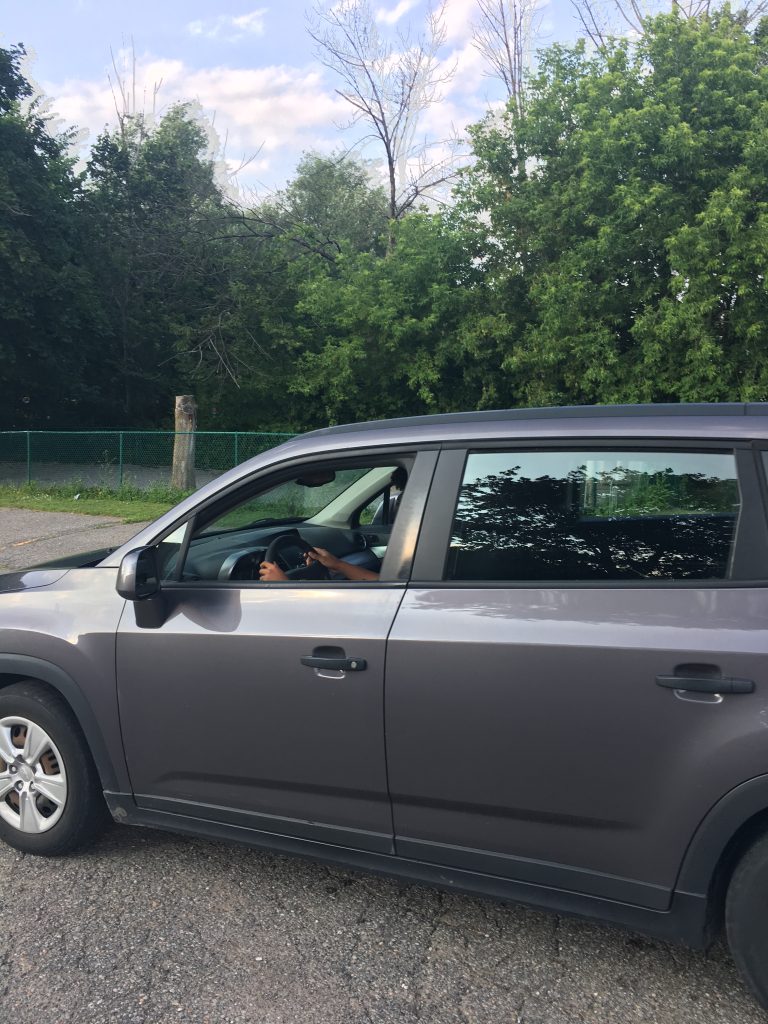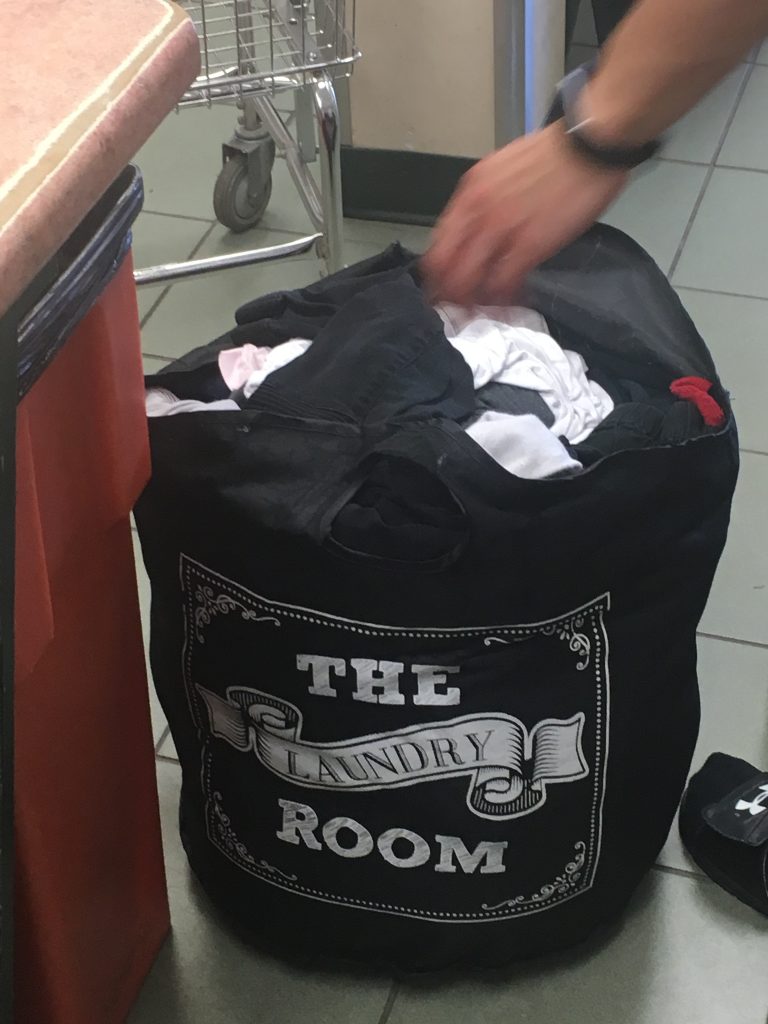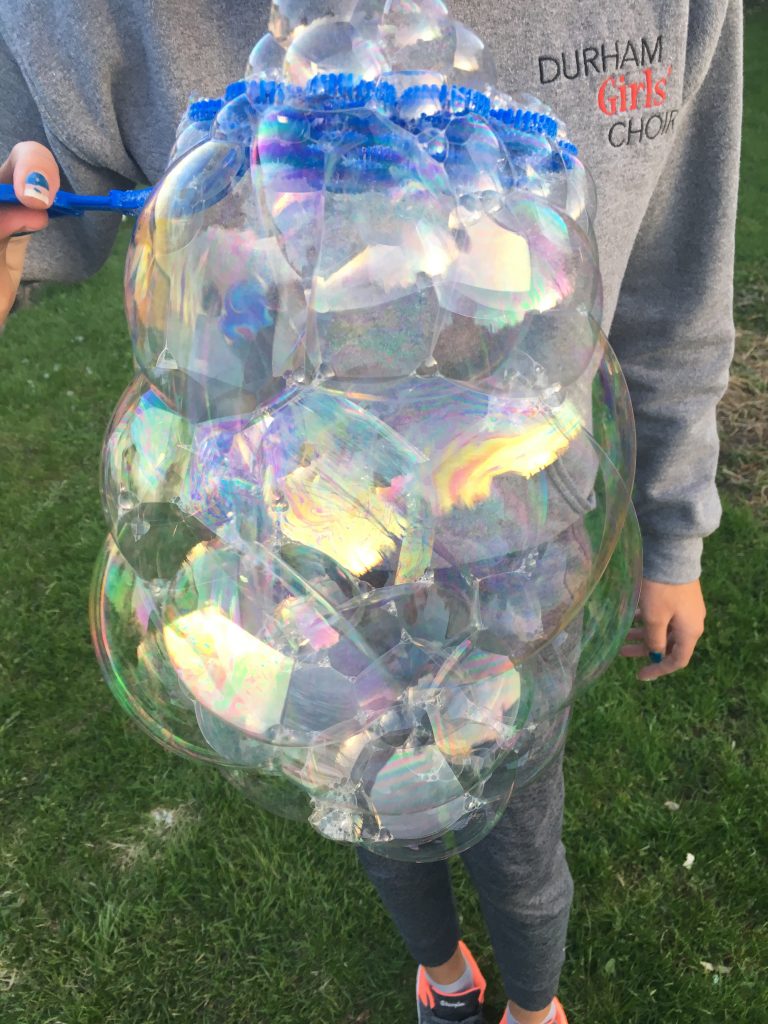The young girl from next door suddenly went soaring by on her bicycle the other evening as I watered plants on my porch. I had wondered why her mum was sitting on a lawn chair by herself right by the street, but then I understood😊. Not only had the girl now learned to ride a bike, she wanted to try going farther and farther up the street. Each time, she came back to check in with her mum. She was very pleased! And she had every right to be. She’d worked hard. I was pretty sure I had just seen her wobbling along with her grandma holding onto the back very, very recently. The next evening I looked out and there she was again, now on roller blades, moving very carefully. This time her grandma was supporting her.
This reminds me so much of how I’ve seen my own kids and others learn over the years. When we are motivated to learn something, either by need or interest, we can often learn it amazingly quickly! Lots of pieces are figured out independently and many others are supported as needed.
There are some key conditions, often overlapping, that I’ve noticed lead naturally to self- directed learning …
Readiness:
There is little that can beat readiness. My youngest son got his G1 driver’s license at the beginning of the summer. He had been clear before his 16th birthday that he wasn’t going to try the test the morning of his 16th birthday the way my oldest son had. It was winter and he didn’t want to begin learning in the winter so he was planning for March. He had been studying a bit and looking forward to going and then March came and went and he said he had decided he was in no rush. He then was back and forth for a few months on whether to go get it and really, it just wasn’t talked about for some time.
Suddenly, the beginning of July, after driving a golf cart during a golf game with family, he came back to his grandparents’ place and told me it was time for him to get the written portion of his license. He had decided he would go try the test on Tuesday. This was Saturday evening so he thought it would give him a couple of days to study but not so long that he would lose momentum. To me, a couple of days didn’t seem like very long to study, but he seemed comfortable.
The next day I asked if he’d like to get the Driver’s Handbook back out (he’d studied a bit a few months prior). He said he already had it. I asked if he’d like to spend some time being quizzed and then quizzing us. That had worked well for my oldest son and we’d all had fun! He said he’d been doing online prep quizzes all morning that mimicked the test so would prefer to carry on with those but that yes, the evening before, he’d like to do some quizzing. We did a bit of quizzing, as decided, and it was a lot of fun and an eye opener to how many little pieces I’d forgotten myself!
The day of his written test, we arrived to a jam- packed examination centre – wow! I looked at him to see if he wanted to come back a different time but, no, he said we’d wait, so wait we did. And wait. And wait. It was a sea of people there waiting to take either the written test or the driving test – a mixture of youth trying one of the tests for the first time and elderly trying their driving test in order to keep their license. Shoulder to shoulder, test takers and family members waited apprehensively.
Is it possible to be nervous and confident at the same time? I think so – that’s how I’d describe S heading into the testing room but he was quite calm and came out with a pleased smile, G1 Beginner’s license in hand.
Then someting interesting happened. He spent the next two days almost continuously watching the first season of “Canada’s Worst Driver.” He was absolutely immersed in it and re-watched a few episodes. Actually, we all joined in for some of the episodes. What at first could be seen as just trashy binge watching, quickly showed itself to be careful observing and confidence building. Over the next few weeks he carefully, but confidently, practiced his driving and no more “Canada’s Worst Driver Episodes” were watched. It was kind of fascinating to me to see how he put all the pieces together in just the right way for himself, from timing, to studying, to finding and watching a related show in order to meet his goal. It came together that way because it was his own readiness and timing, not anyone else’s.
Learning is often not linear. He came back and forth to this over the course of 6 months.,

Natural interest or passion:
Sometimes the drive and passion to do something overtakes uncomfortable circumstances. Snowboarding and working on snowboarding obstacles and props was a huge interest for S and his friend last winter.
The temperature was far below zero. It was – 26 degrees Celsius with a windchill factor of – 34. It was beautiful and sunny but with the kind of cutting cold that takes your breath away and makes itself known to you when a small part of your face isn’t covered. It was the type of day that is breathtaking to look out at as the bright sun reflects off the snow – from the window! While the rest of our family was cosied up indoors on a Sunday afternoon, looking out at the snow from the warmth of the house, cats curled up on quilts and knitted blankets, I was receiving these snowboarding videos posted below from S, while he had a quick hot chocolate break at his friend’s house. You can hear the wind in the background😊.
Normally doing most of their snowboarding at a couple of local ski hills, they had discovered that they could create their own sort of terrain park and snowboarding hill from a hill and parking behind a parking lot near the friend’s house. It was a DIY snowboard hill and they shaped pieces of it with snow, shovelled snow to the side and dragged over various skateboarding rails and jumps.
They were out there all afternoon, working on the hill, then on their snowboarding skills, on a day that was very uncomfortable to be outdoors for prolonged periods of time. It didn’t have a slope or jumps nearly as high as they could have at their regular hills but the opportunity to work away at it themselves was enough to motivate.
While I dreaded warming the car up again and heading into the cold to pick him up in the early evening, they continued to work away at a hill they would maintain through ice and new snowfall to use the rest of the winter. I was impressed.
Kids are very capable of learning and working away at hard and sometimes in unpleasant circumstances to meet a goal.
Click in space below to play video.
Click in space below to play video.
Click in space below to play video.
Usefulness:
G decided to learn to swim at a considerably later age than a lot of kids. He had spent quite a bit of time in water in careful ways, but possibly because of a combination of sensory difficulties and a bad early experience in swimming lessons, he was very cautious and always kind of on the periphery at public pools and beaches.
When he was about 10, he decided with determination to really learn to swim. His friends were all swimming strongly and his younger siblings were more comfortable and having more fun in the water than he was. At the time, the kids were part of a big homeschool sports/ gym class at the YMCA each week and afterward, there was an opportunity for any kids and/or parents to have an open swim for a good hour and half or so. After that, swimming lessons began for those interested. G wasn’t interested in the lessons but he suddenly decided that he would learn to swim regardless. The kids were coming up with all sorts of group games back and forth from the deep end, coming up with neat jumps and twists off the pool deck and into the pool and he was missing out. As a kid who was both athletic and very social, he didn’t want to miss out!
He let his friends and I know that he wanted to learn and two things happened. A friend who was 11 and a confident swimmer began that very day in the pool, giving him tips and working in the shallow end with him. The two of them worked together while the other kids continued with their games. Then another friend came over and started helping as well, the three of them working together on G’s swimming.
The second piece was that G and I decided to go to the pool each day that week, about 9:00 in the evening after lessons and scheduled programs were over and we had the pool almost entirely to ourselves. We practiced and practiced until late each evening and by the end of the week, he was swimming proficiently and confidently in the deep end. This, of course, opened the door to being more confident swimming in any pool, waterpark or lake.
He wasn’t passionate about swimming itself and it wasn’t really a necessity for socializing – he spent time with friends in lots of other ways – but it was a useful enough skill for him to have socially that he was willing to push past his discomfort to ask for help and work hard to quickly learn.
Self-directed learning isn’t necessarily a solitary process. It is intrinsically motivated but can involve support and collaboration.

Need:
As my oldest approached the later teen years and early adulthood, I had all these snippets and ideas of information I thought we needed to make sure he knew. Tips about banking, grocery shopping, housecleaning, laundry came and went through my mind at different times. When he and his friend planned to move out of college residence at the end of the first year and into an apartment or shared house, thoughts about the best way to search for housing were never far from my mind. Living two hours away, I forwarded a few possibilities (OK, maybe several). I had my eye on a GREAT apartment! G was gracious and looked into the ones he thought might work, getting back to me with the results. Ultimately, though, they found their own place that they hoped they could rent, an apartment within a house, with classmates renting the other side of the house.
There was an Open House for prospective tenants and because it was in such a convenient location to the college, I suggested that maybe it would increase their chances of getting it to have a co-signing parent there️. I could shift things around a bit and drive down for the day. Politely, G responded that he thought they were fine on their own. They were. They were there for the beginning of the Open House and talked through how to present themselves. They got the apartment and later, in a co-signing conversation I had with the landlord, he said that after managing various rental properties for many students, he was blown away by how quickly, politely and efficiently they got their paperwork to him and made arrangements.
Now, we partnered with G for the remaining parts of the process as far as some calls to the bank, the initial cleaning of the apartment and moving in but by the day before he moved in, he had secured two summer jobs (was trying to decide between the two) and made arrangements for all sorts of details around Wifi, mail rerouting, figuring out bus routes, laundromats and more. He was back and forth to the bank, figuring out bank drafts and rent schedule. He had some frustrations and, of course, had to navigate the compromise of moving in with a roommate and being open to different ways of thinking. He had to learn lots of new things but he learned them quickly and well because he needed to. They were parts of the process – necessities of having the living situation he wanted.
Again, I was so glad that I pulled myself back far enough for him to do his own thing. He was really in the driver’s seat of his own life and once secure in knowing we respected that, was then very open to help like drives to the grocery store or laundromat if I came to visit.
People learn new skills as they need them and in context with real life.

Here’s the thing with respecting these conditions of natural learning …
We often don’t wait long enough for readiness. We have our own agenda, either for convenience, comfort level or societal expectations. When people come to things in their own time, it’s easier, more authentic and more importantly, it’s theirs.
We often don’t value natural interest and passion unless it’s something that society values, we value or at least understand. Braving subzero and windchill factor temperatures for hours in order to move snow around, create obstacle courses and zoom around on a board is not necessarily valued! We tend to value things that clearly “will get you somewhere in the future” or that “ you can use someday.” When we think this way, we miss two important pieces. One is that the skill of working hard at something, regardless of what it is, and especially in the face of challenges, creates confidence in self, competence and a willingness to grow that can be transferred to any other activity. Secondly, it is fine just to enjoy learning something because it’s interesting to you and you enjoy it; the present moment is important too.
We often don’t recognize what might be useful to another person. We think of useful “life skills” such as cooking or fixing things or understanding money, but it’s not that clear cut. There are many things that are useful to kids on a personal level that we might not even think of. Something like swimming or reading or tying shoes might seem to us like general skills simply to be learned in isolation, but once they become useful to the person, they are much more likely to be learned.
We might not understand another person’s need. What we think someone needs and what they actually need might be two very different things. We might think we’re being helpful when, in fact, what someone needs is the time and space to grow and work things out themselves. Conversely, we might not recognize the need for support and end up leaning too far back, when, with a well-communicated, moderate amount of partnering, someone can move forward to meet a need.
Self- directed learning looks so different from compulsory learning or learning that happens on an external timetable because it’s actually an entirely different process. It’s real. It’s effective. It belongs to them.
What are your thoughts on self-directed learning? Does the idea of these conditions of learning ring true for you or in what you’ve observed?

Enjoy this post? Please share.


Thank you very much!! This is helpful and yes, I might just email you.
I do think a lot about this with my daughter and the process of learning to read. I very. very clearly see this self-directed motivation with helping in the kitchen as well toward art and building things and challenging puzzles. I’m not seeing it much yet with reading, and of course reading is what there seems to be so much pressure about! I know this post is more about older kids and maybe people in general but I wonder what your thoughts are in relation to learning to read. Is it maybe more important to find ways of encouraging reading than it is with some other skills? Suggestions?
Hi Mara,
Thanks very much for your question.
That’s wonderful that your daughter is interested in learning so many new things:). You’re right, this post is focused on older kids/young adults as that’s the stage of life that I’m currently in and so those are the examples that came to mind but yes, self-directed learning is definitely about everyone.
It’s also about learning all kinds of different things and reading is a great example. My own kids learned to read at very different ages and each in different ways from one another. Just to give some perspective, one began recognizing all kinds of sight words at 3 but then didn’t actually begin to read very fluently until 8.5. Another began reading at 4 in a kind of sounding out/phonis-based way and progressed really incrementally. They also ranged (and still do) in the types of things they’re interested in reading. They all became very good readers, regardless of how they began. I have seen this range with lots and lots of kids of families we know and are involved with.
Do I think it’s more important to encourage reading than other things? No, I don’t actually think that I do. I know it can be really hard to imagine (and certainly many people do not agree) but kids become motivated to read one way or another – whether it’s need, usefulness or interest. Books, signs, instructions for games, recipes are all around us. Often, kids also want to communicate through writing (letters to people, snippets about themselves, cards, stories) so that’s a whole other avenue they can explore. I think it’s always a great idea to do lots of reading and game-playing together, but I would say the same thing about spending time in the kitchen together or offering lots of art/visually creative opportunities – those things are not necessarily mutually exclusive anyway.
So, I guess my suggestion is to keep surrounding yourselves with good books, regular life and an open mind to being available to support her when she’s ready, whatever that means for her. Some kids quite literally begin reading on their own, others like to be partnered with and others may show a real desire but benefit from lots of time, thought and support. To me, self-directed learning just means that the motivation, drive and readiness comes from the person themselves, not that they won’t ask for or need support.
There is all kinds of great stuff online about learning to read naturally/unschooling/self-directed reading from sources such as Living Joyfully, Stories of an Unschooling Family, Happiness is Here, writing and studies by Dr. Peter Gray and Gina Riley and so many more.. Email me if you like:).
You may wish you hadn’t asked;).